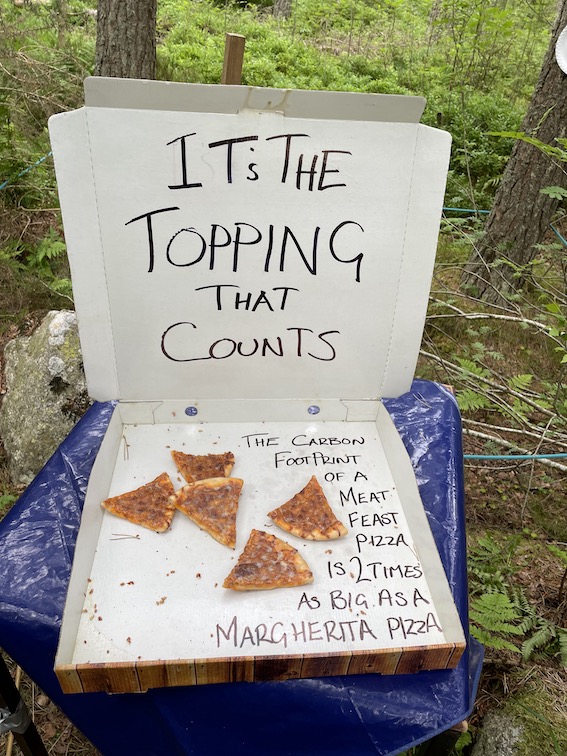
Scottish and Land Forestry manage Bennachie, a woodland close to where I live. This summer, a trail can be followed that takes you around the area of woodland needed to capture the annual carbon footprint of an average UK citizen. As you walk along, you encounter illustrations of different items such as the food we eat. Each station has rope that shows precisely the area of wood that is needed to capture the carbon emissions of each activity or item.
If you look at the photos above and below, you can see how the use of ropes is neat. It’s easy to see the difference in the choices we make. The use of props also adds interest to each display.
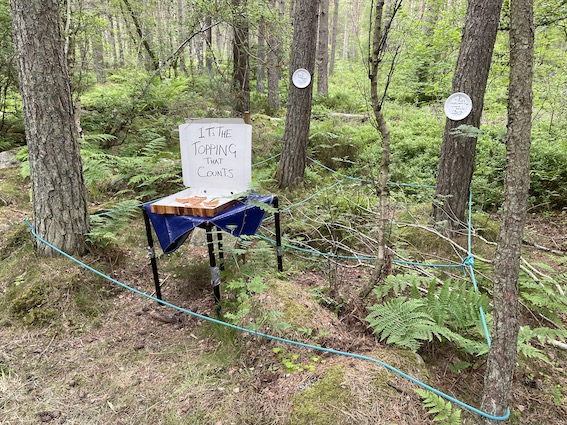
There are also very simple explanations of how nature helps – trees store carbon in their trunks, branches and in the soil. Plants remove carbon dioxide and use it to make the sugars they need through the process of photosynthesis. Thus plants have a key role to play in tackling climate change.
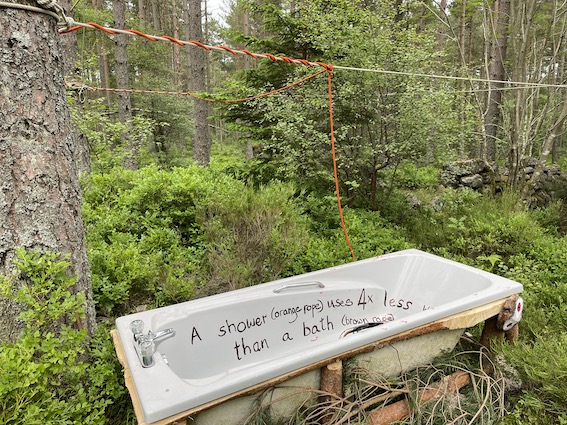
Calculating the exact figures is complicated and the trail is designed to be illustrative rather than precise. The trail uses the book How Bad are Bananas written by Mike Berners-Lee as a reference for the calculations given on the trail.
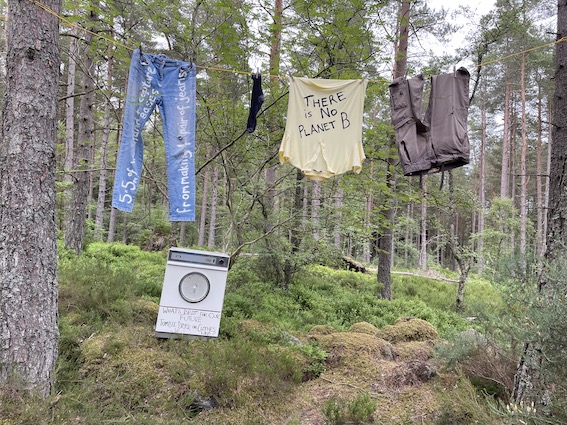
What immediately struck me, was that this type of activity is ideal for teachers working with older children – it’s a practical exercise that can help children use their mathematical knowledge of area and ratio in an outdoor and real-life context. It could be that a display is created, but this may not be necessary. A class could separate into small groups, each choose an element of their lives, work out the impact of different behaviours and lay out the rope or chalk this on the asphalt in an outdoor space. By physically exploring the amount of woodland needed, it really brings home the impact of our lifestyles and could be a useful springboard into meaningful discussions about what changes we could make and why it matters at a personal level.
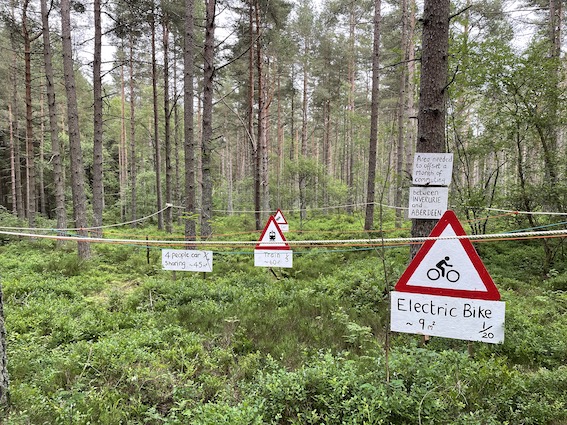
Perhaps the most poignant sign within the trail stated “We estimate that the habitats on Bennachie on the land owned by Forestry and Land Scotland can capture the carbon footprint of between 1000 to 2000 average UK citizens. The population of Inverurie is 13,600.” Thus it is evident that as well as needing more trees and other plants, a reduction in greenhouse gas emissions is needed by all of us.
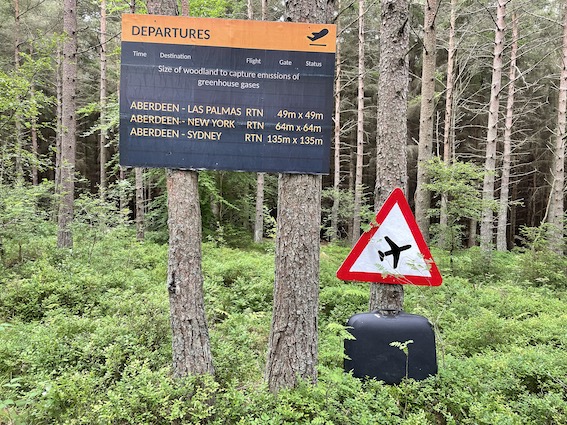
Finally, this “walking display” was created through the involvement of many people – Aberdeenshire Council Ranger Service and the Baillie’s of Bennachie as well as Forestry and Land Scotland staff. A fab joined up effort. Thank you! For more information, have a look at the Baillie’s of Bennachie webpage. Pete Smith, Professor of Soils and Global Change at Aberdeen University was also involved. He has a video which provides further practical changes each one of us can take at an individual level to help mitigate climate change.




















This looks really interesting and effective. John and I are going to have a look at it tomorrow. Thank you for posting and telling us about it. xx
Fab to see you out and about Juliet!! Great exhibition too!
Juliet thanks for your comments…not quite finished yet as we still have a few bits to do…plan to launch at the end of July or earlier so all comments most welcome to climatechange.bennachie@btinternet.com